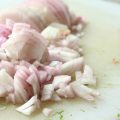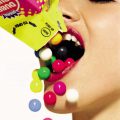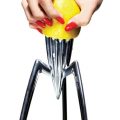Monastery hut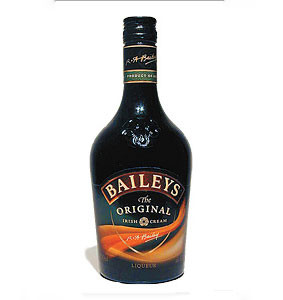 What liquor is drunk onmonks and European monasteries. No, the monks did not drink liquors. Herbalism, homeopathy and the distillation of alcohol for medicinal purposes have always been a favorite monastic entertainment - from a combination of these three principles, liqueurs originated. Some of the first monastic recipes are still alive, such as the green or yellow Chartreuse liqueur from the French Grenoble, which contains an extract of 130 plants, or the nutty Frangelico from Italy. The ancestors of modern liqueurs were banal alcoholic extracts of medicinal herbs, plants, fruits or parts of fruits, for example, citrus peel. Then the liqueurs began to insist and drive through the distillation cube - this was how they got flavored alcohol. Today's liqueurs are often the fruit of high technology. Baileys came up in 1974. The formula by which the cream is mixed with whiskey is an industrial secret. The combination of the incompatible is the Baileys chip, so it is popular in radical cocktails such as B-52. The Citrus Company
What liquor is drunk onmonks and European monasteries. No, the monks did not drink liquors. Herbalism, homeopathy and the distillation of alcohol for medicinal purposes have always been a favorite monastic entertainment - from a combination of these three principles, liqueurs originated. Some of the first monastic recipes are still alive, such as the green or yellow Chartreuse liqueur from the French Grenoble, which contains an extract of 130 plants, or the nutty Frangelico from Italy. The ancestors of modern liqueurs were banal alcoholic extracts of medicinal herbs, plants, fruits or parts of fruits, for example, citrus peel. Then the liqueurs began to insist and drive through the distillation cube - this was how they got flavored alcohol. Today's liqueurs are often the fruit of high technology. Baileys came up in 1974. The formula by which the cream is mixed with whiskey is an industrial secret. The combination of the incompatible is the Baileys chip, so it is popular in radical cocktails such as B-52. The Citrus Company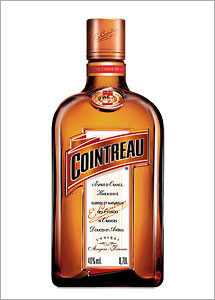 The richer the flavor was, the moreHe enjoyed popularity with Drover. Thus, a separate group consisted of liqueurs with citrus peel, the brightest representatives of which are triple sec liqueurs, “perfumed” by orange peel, a small bitter citrus originating from Curacao. From here, by the way, the name of one of these liqueurs also went. Without the Cointreau, the most famous "triple sec", neither the traditional "Margarita" nor the popular Madonna and the heroines of "Sex and the City" Cosmopolitan, nor Crepes Suzette - pancakes with Cointreau sauce and orange jam, can do without example of the use of liqueurs in cooking.
The richer the flavor was, the moreHe enjoyed popularity with Drover. Thus, a separate group consisted of liqueurs with citrus peel, the brightest representatives of which are triple sec liqueurs, “perfumed” by orange peel, a small bitter citrus originating from Curacao. From here, by the way, the name of one of these liqueurs also went. Without the Cointreau, the most famous "triple sec", neither the traditional "Margarita" nor the popular Madonna and the heroines of "Sex and the City" Cosmopolitan, nor Crepes Suzette - pancakes with Cointreau sauce and orange jam, can do without example of the use of liqueurs in cooking. 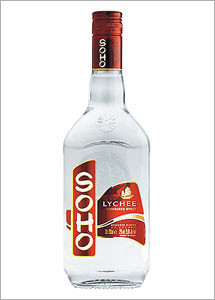 Fruit barSometimes, fruit liqueurs are extremelytraditional. Such is, for example, Creme de Cassis - blackcurrant liqueur, without which “Kir Royal” is inconceivable. But among the fruit liqueurs there is a modified one. One of the discoveries of the last decade is Soho, a liqueur based on the berries of the lychee tree, known for its juicy and specific aromatic white flesh. It was first released in 1989 for bars and nightclubs, and in 1991 appeared in retail. Sometimes "Soho" is drunk pure with ice, but still more often - in cocktails, combining with fruit juice, cola and tonic. The taste of litchi is so recognizable that it was difficult enough to kill him. However, the bar future of fruit liqueurs is not rosy. This is due to the world trend of recent years to replace them with a combination of fruit puree and strong alcohol, especially vodka. Club anise
Fruit barSometimes, fruit liqueurs are extremelytraditional. Such is, for example, Creme de Cassis - blackcurrant liqueur, without which “Kir Royal” is inconceivable. But among the fruit liqueurs there is a modified one. One of the discoveries of the last decade is Soho, a liqueur based on the berries of the lychee tree, known for its juicy and specific aromatic white flesh. It was first released in 1989 for bars and nightclubs, and in 1991 appeared in retail. Sometimes "Soho" is drunk pure with ice, but still more often - in cocktails, combining with fruit juice, cola and tonic. The taste of litchi is so recognizable that it was difficult enough to kill him. However, the bar future of fruit liqueurs is not rosy. This is due to the world trend of recent years to replace them with a combination of fruit puree and strong alcohol, especially vodka. Club anise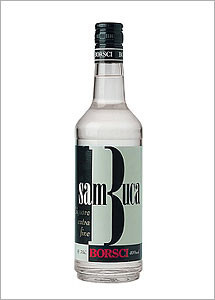 The positions of classic, non-fruity liqueurs are not inable to shake no fashion. Moreover, some of them are experiencing a rebirth, like Sambuca, an anise liqueur from Turin, Italy. Two varieties are used in anise liqueurs: green from the Mediterranean and star from Vietnam or China. The strength of anise liqueurs ranges from 25 to 51 degrees, but the strength of sambuca is exactly 40. The word "sambuca" comes from the scientific name of elderberry - Sambuca Nigra. Sweet sambuca is supplemented with butter and white elderflower flowers, aniseed grains and sometimes citrus zest. Elderberry flowers add extra aromas that go well with anise. Sometimes sambuca is drunk "with a fly" (con la mosca): two coffee beans are put into a glass, liqueur is poured, set on fire, waiting for the drink to cool, and only after that they drink it. This ritual is very popular among clubbers, who for some reason believe that sambuca has a narcotic effect. In fact, there is nothing to "spin" in this liquor - it's all about successful marketing.
The positions of classic, non-fruity liqueurs are not inable to shake no fashion. Moreover, some of them are experiencing a rebirth, like Sambuca, an anise liqueur from Turin, Italy. Two varieties are used in anise liqueurs: green from the Mediterranean and star from Vietnam or China. The strength of anise liqueurs ranges from 25 to 51 degrees, but the strength of sambuca is exactly 40. The word "sambuca" comes from the scientific name of elderberry - Sambuca Nigra. Sweet sambuca is supplemented with butter and white elderflower flowers, aniseed grains and sometimes citrus zest. Elderberry flowers add extra aromas that go well with anise. Sometimes sambuca is drunk "with a fly" (con la mosca): two coffee beans are put into a glass, liqueur is poured, set on fire, waiting for the drink to cool, and only after that they drink it. This ritual is very popular among clubbers, who for some reason believe that sambuca has a narcotic effect. In fact, there is nothing to "spin" in this liquor - it's all about successful marketing.

Making Money with Desserts: Success Stories
Yevhen Polishchuk (Fedutinov) instagram: @ evgeniyafedutinovavk.com / janeshomebaking– It all started with baking for relatives and friends. Gradually, she began uploading photos of her baking to Instagram, and orders began to come in. I made my first cake to order on October 13, 2014, and a little earlier I started making macarons and cupcakes. We can say that the business "found me myself", I am very [...]

Soups are cold recipes with photos
Cold cucumber soup with yogurt and lemonSorbet from La Taverna restaurant chef Alexander Zhurkina Photo: Getty Images Ingredients: Yoghurt without additives - 125 gCucumber - 150 gSorbet lemon / lime - 50 gCool shrimp - 24 gFresh ginger - 1 gLime lime - 5 gFresh orange juice - 5 gPetroshka - 1 g pink - 1 gCress salad - […]

barbeque kebab
Pork tenderloin glaze Photos: Dmitry Bayrak / dbstudio Cooking time: 20 minutes + time for pickling. Calorie content: 454 kcal per 1 serving. For 4 servings: 4 pork tenderloin (about 300 g each), 1 onion, 2 cloves of garlic, 1 tsp. lemon peel, 1 tsp. lemon juice, a pinch of ground cumin, coriander and turmeric, 1 tbsp. l vegetable [...]

Pierre Duacan: dietary recipes: Ducane diet
Beetroot Photo: Season'S, Luxury Hotels Representation You will need: · Boiled beets - 60 g · Fresh cucumbers - 20 g · Red radish - 20 g · Green onions - 10 g · Egg - 1 pcs · Mineral drinking water - 200 g · Salt - 1 g Ready: · Boil egg and beetroot. · Grind cucumbers, radishes and a part of beets. Putting everything [...]
